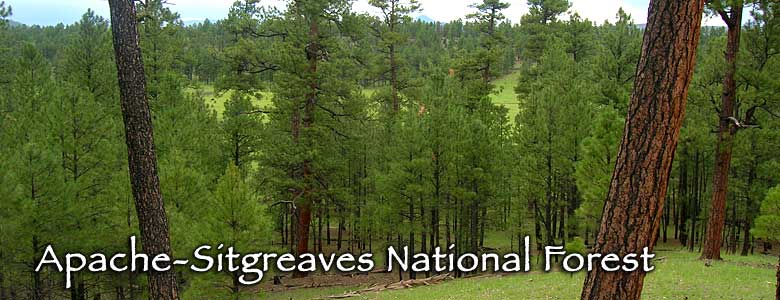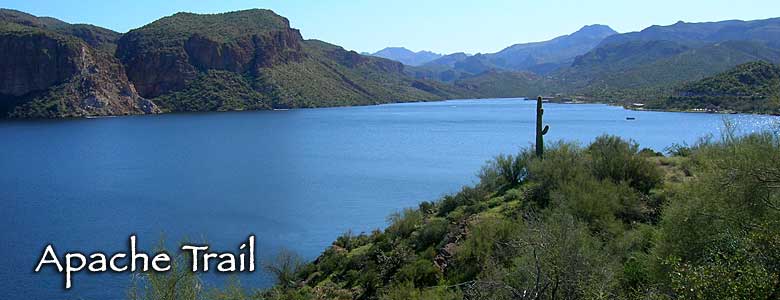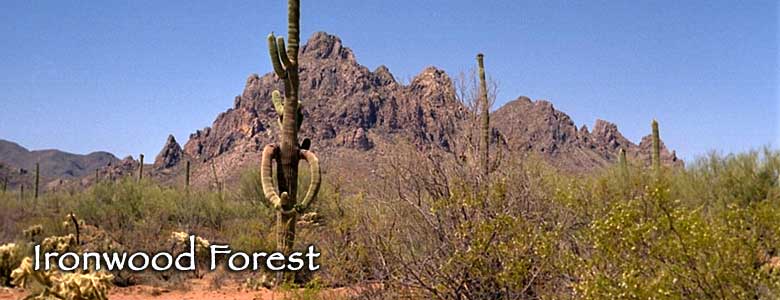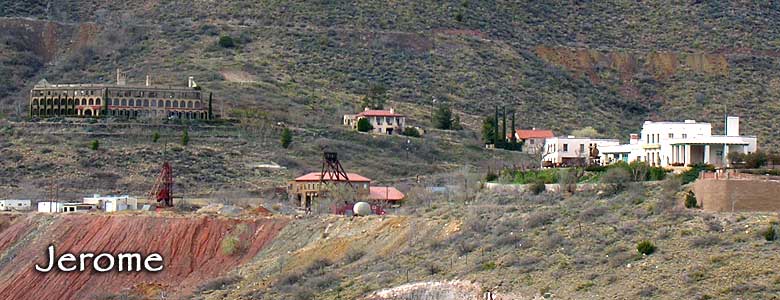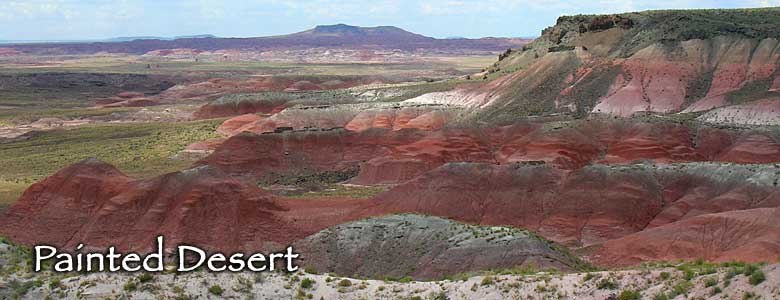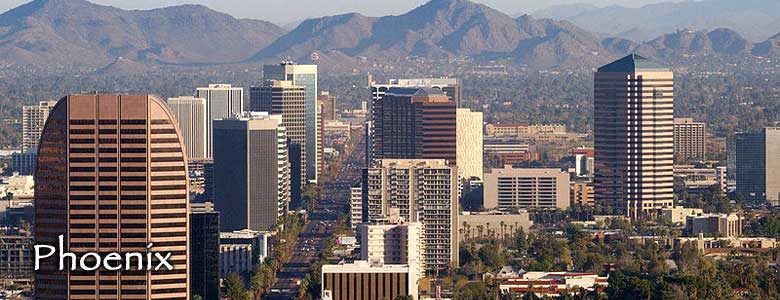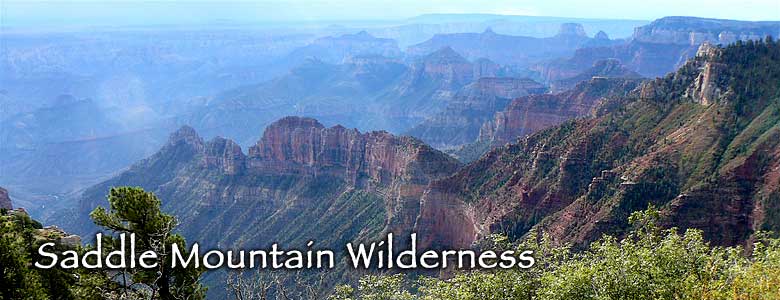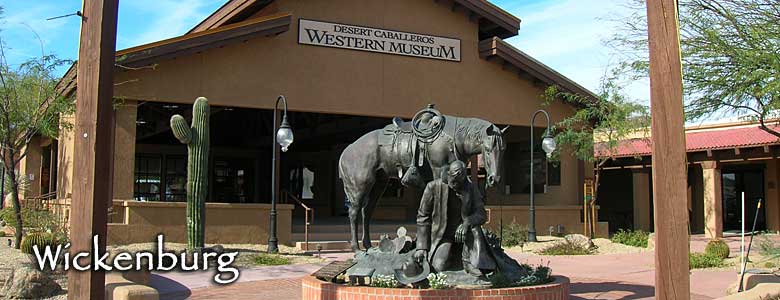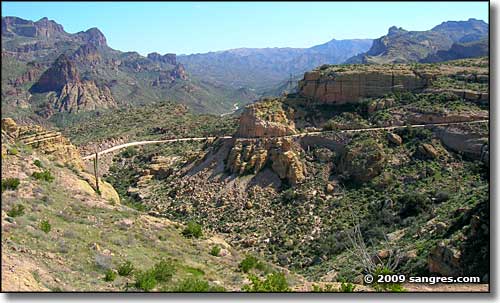
Arizona Information, Photos and Maps
A Reference and Travel Guide Full of Area Information
Containing some 113,990 square miles of land, Arizona is the 6th largest state in the United States. The population of 6,482,505 (2011 estimates) put the state at #33 in the country. The state is probably most famous for its large areas of desert and otherwise barren landscape but maybe a third of the total area is forested in pinyons, Ponderosa pine (the largest stand of Ponderosa pines on the planet is in Arizona), cedars, spruce, aspen and other trees. Only about 15% of Arizona is private property, the rest of the state being held by the Federal government (National Parks, National Monuments, National Forests, National Wildlife Refuges, military establishments and Bureau of Land Management properties), Native American Nations (Navajo, Hopi, Tohono O'odham, Apache, Yaqui, Yavapai, Quechan and Hualapai) and the state (parks, forest and State Trust Lands).
Arizona is almost bisected by the Mogollon Rim: a nearly 2,000-foot high escarpment that marks the southwestern boundary of the Colorado Plateau, a large geologic formation spread across Arizona, Utah, Colorado and New Mexico that was uplifted about 65 million years ago. Eroded into the Colorado Plateau is the world-famous Grand Canyon, carved by eons of water flow in the Colorado River and its tributaries. Exposed in the canyon is almost 2 billion years of the geological history of Planet Earth. North and east of the Mogollon Rim the countryside sees cold and snowy winters, cold enough that several times a year parts of the area see the coldest temperatures recorded in the 48 contiguous states. At the same time, Phoenix sets the record for more than 100 days per year with temperatures above 100°F.
Average annual precipitation in Arizona is 12.7 inches, with most of that precipitation arriving in two waves: a winter rainy/snowy season and a short monsoon in the late summer. That summer monsoon is often accompanied by lightning and thunderstorms, often with brief but heavy downpours that cause local flash flooding.
The first Europeans to enter Arizona arrived in 1539 with Fr. Marcos de Niza. The next year came the treasure-seeking expedition of Francisco de Coronado. Between 1540 and 1542 Coronado and his men traveled across Arizona, New Mexico and Kansas searching for the fabled "Seven Golden Cities of Cibola." Finally they gave up and returned to Mexico but not before decimating whole native societies with the spreading of European diseases the natives had no natural immunity to. It was almost 150 years before another organized expedition entered Arizona, and that was organized by the Jesuit Father Kino. In the 1690's and early 1700's he founded several missions in the southeastern part of the state and converted many natives to Christianity.
The Spanish military didn't move in until silver was discovered in the area south of what is now Tucson. They built the presidio at Tubac in 1752, then built a presidio in Tucson in 1775. The military was necessary to protect the miners and other settlers from marauding Apaches who were very resistant to the European invaders well into the late 1800's.
Mexico declared its independence from Spain in 1821 and Arizona became known as Alta California. Then came the Mexican-American War in 1847-8. That's when the Mormon Battalion marched across southern Arizona (from Tucson to Yuma Crossing) and assisted in the occupation of California. With the Treaty of Guadalupe Hidalgo, the United States paid Mexico $15 million and took over control of what is now Arizona north of the Gila River. Surveyors for a proposed Transcontinental Railroad determined that there was no viable route for the railroad north of the Gila River so the United States negotiated the Gadsden Purchase and acquired land south of the Gila to set the national boundary where it is today. The second Transcontinental Railroad wasn't completed until 1889.
The first official use of the name "Arizona" seems to have been in an official proclamation establishing the Confederate Territory of Arizona in 1861. That was seconded by a proclamation recognizing the territory signed by Confederate president Jefferson Davis in 1862. Then in 1863, President Abraham Lincoln signed a document creating the Arizona Territory out of the western half of the New Mexico Territory in 1863. It is that document that delineated what is now the official state boundaries.
Arizona Territory was criss-crossed by "American" explorers for years before the first settlers arrived from Utah. Brigham Young sent several companies of Mormons into the territory to settle and claim significant parts of the area for the LDS church. They founded still-existing towns and cities like Phoenix, Safford, Heber, Prescott, Mesa, Snowflake and Tempe.
After the end of the Civil War came the real flood of eastern settlers, and they were quickly followed by contingents of the US Army because the Apaches, in particular, were still resisting that encroachment on their tribal countryside. The Indian Wars in Arizona were mostly over by 1882, about the same time the largest cattle ranches were flourishing. Mineral prospectors had been coming and going for years but the largest gold and silver strikes had mostly petered out by the mid-1880's. What took on from there were the big copper mines which still produce about 2/3 of the copper on the American market. Cotton is also a driver of the Arizona economy, Arizona having once been the largest producer of cotton in the country. Cattle and citrus fruits also account for a lot of the state's economy but tourism is probably the single largest industry in the state.
World War II saw the establishment of several Japanese-American internment centers and several German and Italian POW camps in the state. The end of Word War II saw the proliferation of air conditioning, a development which has fueled the rapid population growth in Arizona ever since (until the financial collapse in 2008: that began the first actual reduction in population since Phoenix was first established). About 2/3 of the total human population of Arizona lives in the Phoenix metropolitan area. That population density has fueled the establishment of profitable Arizona Casinos on Native American land in Maricopa County, but there are other casinos on reservations in other parts of the state, too.
For a state that has long been dominated by the Republican Party, the largest employer in the state is the state government. The largest private employer is Walmart. After that comes Banner Health Care, then several national financial services companies. This has contributed to Arizona's median income always being somewhat below the national median. At the same time, depending on where you do your business in the state, sales taxes can range up to 10.7%. Local lodging taxes can also add up to 10.7%. The state doesn't tax home groceries but some cities do, including Phoenix (2%). State income taxes range from 2.87% (for up to $10,000 in annual income, $20,000 for joint returns) to 5.04% (for more than $150,001 in annual income, $300,001 for joint returns).
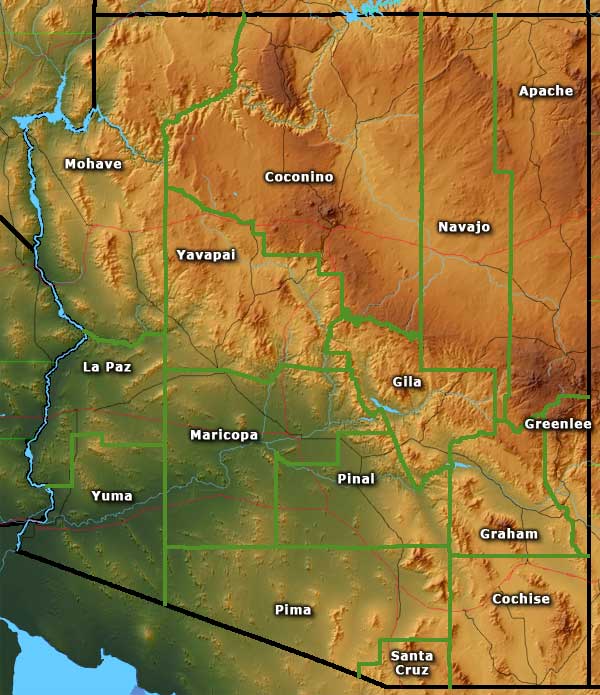
You can click on the county names on the map above or on the names on the list below.
Each of the county pages has some demographics about the county and a zoomable/pannable map centered on that county.
| Apache County Cochise County Coconino County Gila County Graham County |
Greenlee County La Paz County Maricopa County Mohave County Navajo County |
Pima County Pinal County Santa Cruz County Yavapai County Yuma County |
| Arizona Towns & Places | ||
|
NOTE: On many of the pages linked below I try to provide some demographic information. As this information comes from the US Census Bureau, there are a couple of caveats that have to be taken into consideration:
|
||
2010 Population Demographics
| Total Population | 6,392,017 |
| Males | 3,175,823 |
| Females | 3,216,194 |
| Population by Age | |
| Under 18 | 1,629,014 |
| 18 & over | 4,763,003 |
| 20-24 | 442,584 |
| 25-34 | 856,693 |
| 35-49 | 1,249,516 |
| 50-64 | 1,141,752 |
| 65 & over | 881,831 |
| Population by Ethnicity | |
| Hispanic or Latino | 1,895,149 |
| Non Hispanic or Latino | 4,496,868 |
| Population by Race | |
| White | 4,667,121 |
| African-American | 259,008 |
| Asian | 176,695 |
| Native American | 296,529 |
| Hawaiian or Pacific Islander | 12,648 |
| Other | 761,716 |
| Two or more | 218,300 |
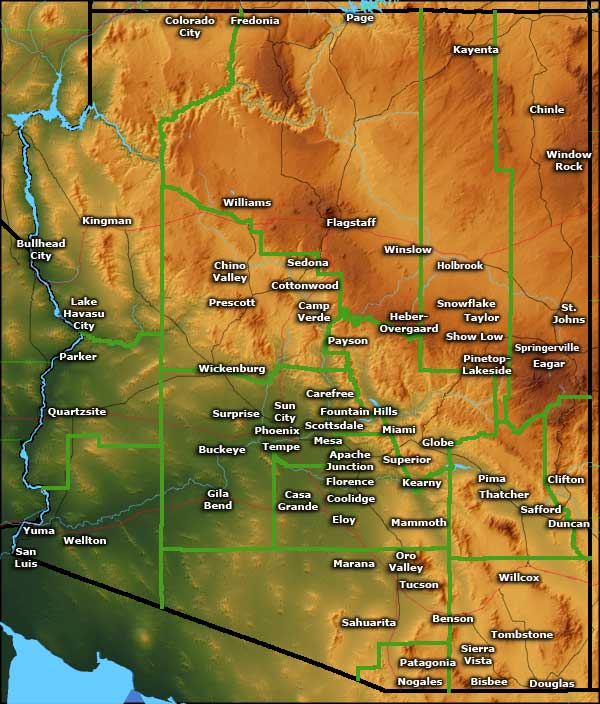 You can click on names on the map above or use the list below (not every name in the list is on the map): |
||
| Apache Junction Avondale Benson Bisbee Buckeye Bullhead City Camp Verde Carefree Casa Grande Cave Creek Chandler Chinle Chino Valley Clarkdale Clifton Colorado City Coolidge Cottonwood Douglas Duncan Eagar El Mirage Eloy Flagstaff Florence Fountain Hills Fredonia Gila Bend Gilbert Glendale Globe |
Goodyear Guadalupe Hayden Heber-Overgaard Holbrook Huachuca City Jerome Kayenta Kearny Kingman Lake Havasu City Litchfield Park Mammoth Marana Maricopa Mesa Miami Nogales Oro Valley Page Paradise Valley Parker Patagonia Payson Peoria Phoenix Pima Pinetop-Lakeside Prescott Prescott Valley Quartzsite |
Queen Creek Safford Sahuarita San Luis Scottsdale Sedona Show Low Sierra Vista Snowflake Somerton South Tucson Springerville St. Johns Superior Surprise Taylor Tempe Thatcher Tolleson Tombstone Tucson Wellton Wickenburg Willcox Williams Window Rock Winkelman Winslow Youngtown Yuma |
